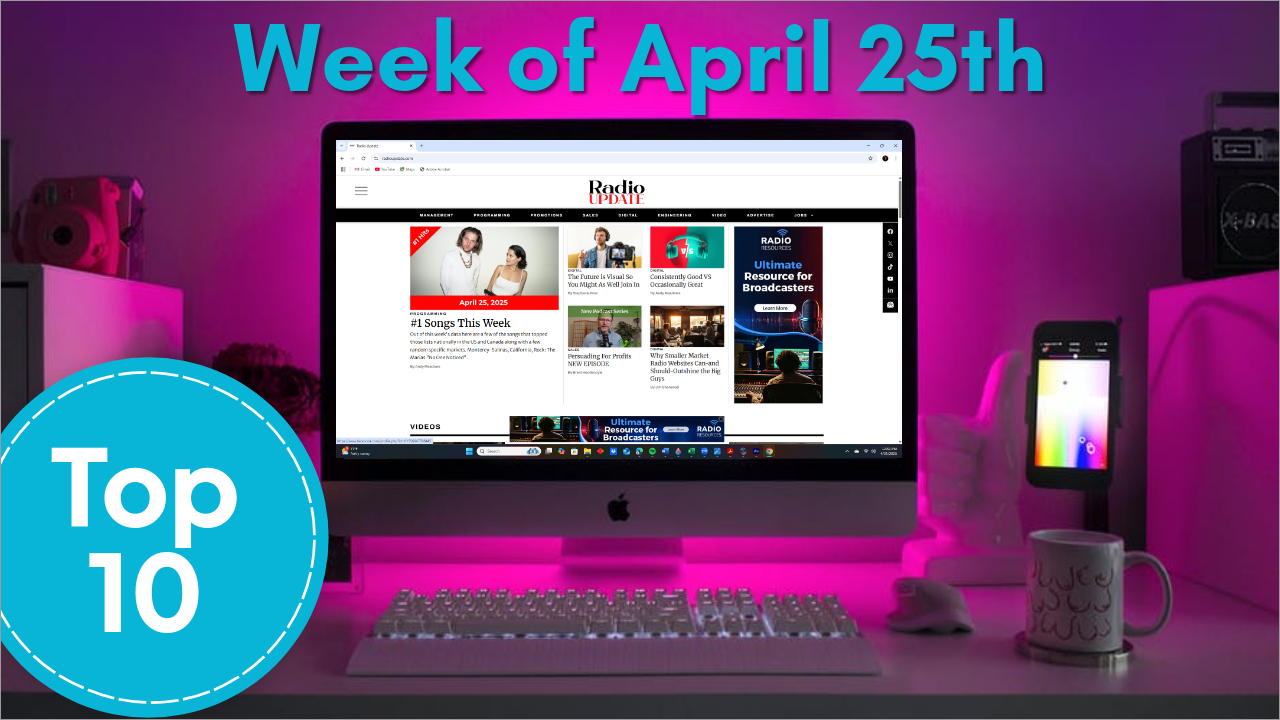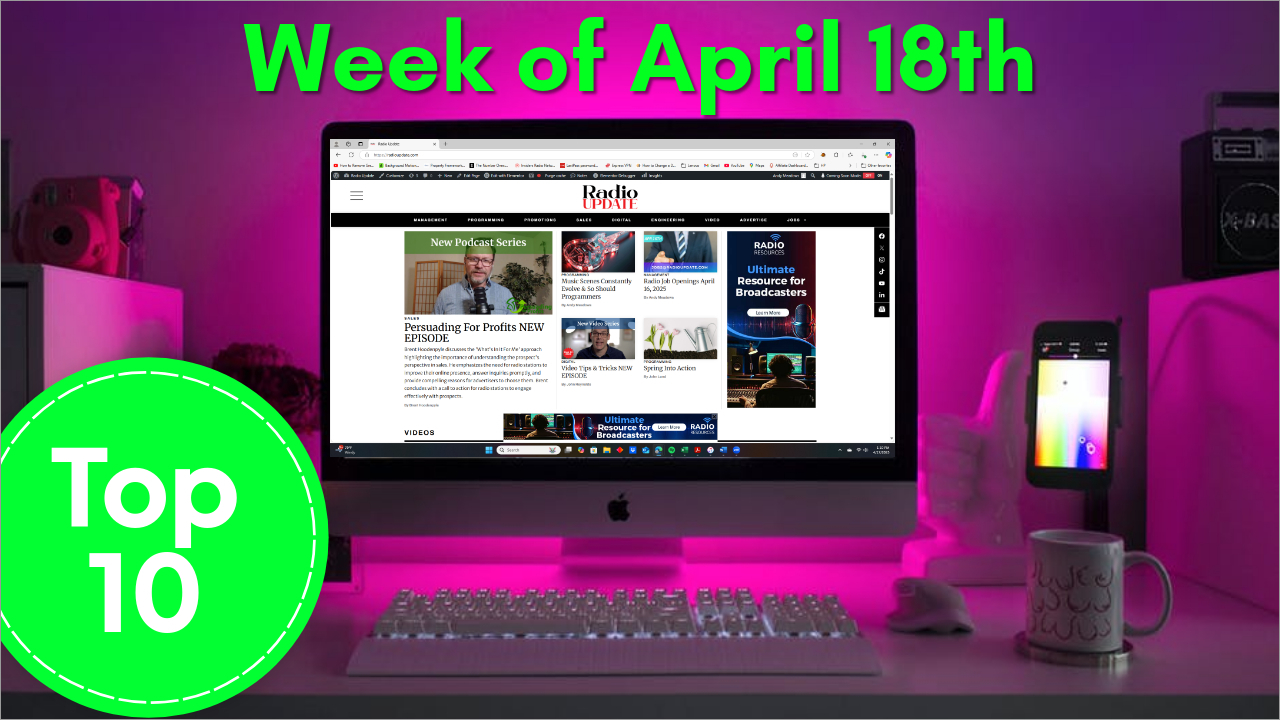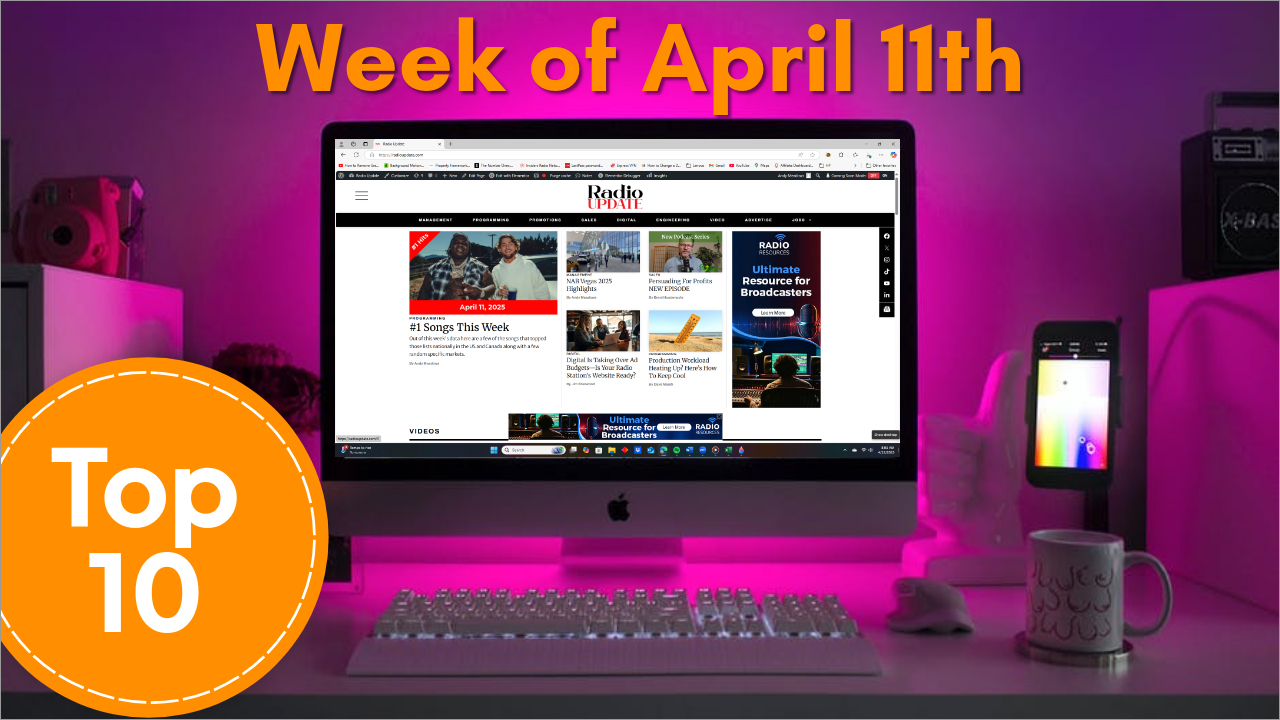Science tells us that the average attention span of a human is only 8.25 seconds now, which is less than the 9 second attention span of a goldfish. But goldfish only have two things to focus on, finding food and not becoming food, and critically they haven’t let smart phones and social media rewire their brains like we have. Due in large part to our love of those devices and algorithms that are built to keep us scrolling, our attention spans are continuing to shrink. One study estimated Gen Z’s attention span at just 8 seconds flat. That’s not surprising when we look at the rise in popularity of short form video. So, how should radio respond to these shrinking attention spans? Here’s a few thoughts on adjustments we could make across departments.
Programming
Loose and long-form are for podcasting, which all on-air talent should be doing at this point. Terrestrial is for tight, strategic and to the point. On air we can’t waste any time with unnecessary words or phrases, get bogged down in details that aren’t relevant or reiterate things. We should go into every break knowing how we’re going to get in, what we’re trying to accomplish and how we’re going to get out. But, leave room for improvisation when inspiration delivers something better than what we have planned. The best radio shows are into their content within about 7 seconds, under that 8.25 second wire, and have at least the outline of every break so they are never truly freeform and completely off the cuff. Similarly, all station imaging and promos should be short, sweet and reinforce the stations main point of difference from competitors.
When programming music for today’s shorter attention spans we have to recognize that we’re at a disadvantage to digital competitors. Since our audience can’t skip songs on the radio, like they can on digital platforms, it’s critical that we’re choosing all the right songs. Luckily with market level song data we no longer have to guess what those songs are. But, it only works if programmers utilize the info and get out of their habit of following Mediabase charts.
Sales
Much like programming, sales needs to adjust their proposals and presentations to cut to the chase. Most of the radio presentations I’ve seen recently are several pages longer than they should be and tell the advertiser a bunch of information that isn’t relevant to them. Advertisers don’t want an entire history lesson on the radio station. Our job is to find out what they actually need and come up with a custom solution to help solve that need utilizing our in-house assets and recommending some other cross-media strategies to pair with radio.
Promotions
If we can’t explain a promotion in a ten to fifteen second imaging piece, it’s probably not going to work well with the masses anymore. That’s the case on everything from major book promotions to smaller daily contests. Yes, it’s true that the bigger the prize, the more likely listeners will be to jump through a few hoops. But, when explaining our contests and promotions on air we still have to quickly tell listeners exactly what’s in it for them, how they can participate and when and where the payoff will happen. Coming up with all of the internal and external marketing together in advance will help sharpen that marketing message so it works on all platforms.
Management
One of the best ways management can reinforce all of these behaviors across departments is by adhering to them themselves and fixing their meetings. Every meeting should have an agenda, a point person, only contain staff who need to be there and start and end on time. There is a huge value in the in-person communication that happens when we get people together for a meeting, but there’s also a trade-off. Everyone involved has to pause what they’re working on for the duration of that meeting. So, we should eliminate all meetings that could be emails and go into every meeting with a plan to ensure that meeting time is well spent.
The other major role management can have in making sure radio adapts to changing attention spans is by signing off on shortening stopsets. People are now used to consuming 15 second to 2-minute stopsets on all other platforms. So, radio cannot stick to our 4-minute plus stopsets any longer. Depending on the format, that could be going to six or seven 1-minute stopsets per hour, four 2-minute stopsets or three 3-minute stopsets. Yes, that will require raising rates or at a minimum holding to our rates. But, it also puts a demand on that limited inventory. Plus, it still leaves quick live mentions, sponsored imaging and everything we can now sell digitally that didn’t exist when we began running those 4-minute stopsets.
What do you think? What are some adjustments you’ve made to better appeal to today’s shortened attention spans? Comment below or email me at Andy@RadioStationConsultant.com.
Pic designed by Freepik.com.














